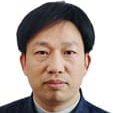3D Reconstruction and Mobile Mapping in Urban Environments Using Remote Sensing
A special issue of Remote Sensing (ISSN 2072-4292). This special issue belongs to the section "Urban Remote Sensing".
Deadline for manuscript submissions: 19 July 2024 | Viewed by 7537
Special Issue Editors
2. Department of Land Surveying and Geo-Informatics, The Hong Kong Polytechnic University, Hong Kong 999077, China
Interests: image retrieval; image matching; structure from motion; multi-view stereo; deep learning
Special Issues, Collections and Topics in MDPI journals
2. Research Institute for Artificial Intelligence of Things, The Hong Kong Polytechnic University, Hong Kong 999077, China
Interests: GNSS; urban planning and navigation; indoor positioning
Special Issues, Collections and Topics in MDPI journals
Interests: image matching; bundle adjustment; 3D reconstruction; image based positioning
Interests: image registering; image classification; change detection; 3D reconstruction
Special Issues, Collections and Topics in MDPI journals
Special Issue Information
Dear Colleagues,
Urban environments are the support platform for the development and evolution of society, economy, and human life. Recently, remote-sensing-based techniques have become a meaningful solution to maintain the orderly evaluation of urban environments. As two critical and complementary roles, 3D reconstruction and mobile mapping are essential to support varying applications in urban environments, including but not limited to automatic driving, smart logistics, pedestrian navigation, and virtual reality. With the rapid evolution of classical techniques, e.g., SfM (Structure from Motion) and SLAM (Simultaneous Localization and Mapping), and the development of cutting-edge techniques, especially related to deep learning, such as NeRF (Neural Radiance Field), recent years have witnessed the explosive development of 3D reconstruction and mobile mapping in urban environments.
This Special Issue focuses on the techniques for 3D reconstruction and mobile mapping in urban environments, especially for new instruments for data acquisitions in complex urban environments, scale-illumination invariant algorithms for robust feature matching, efficient image retrieval for image or LiDAR-based localization, SfM-based solutions for image orientation, SLAM-based solutions for image or LiDAR processing, and deep-learning-based network for feature detection and matching, etc.
In this topic, the involved data sources are limited to the remote sensing field, including images from high altitude satellites, aerial planes, UAVs and MMS vehicles, and point clouds from airborne and ground scanners.
- new instruments for data acquisitions in complex urban environments
- scale-illumination invariant algorithms for robust feature matching
- deep learning for feature detection and matching
- efficient image retrieval for image or LiDAR-based localization
- SfM-based solutions for image orientation
- SLAM-based solutions for image or LiDAR processing
- Neural Radiance Field for 3D reconstruction
- high-resolution satellite images for urban building 3D modeling
Dr. San Jiang
Dr. Duojie Weng
Dr. Jianchen Liu
Dr. Wanshou Jiang
Guest Editors
Manuscript Submission Information
Manuscripts should be submitted online at www.mdpi.com by registering and logging in to this website. Once you are registered, click here to go to the submission form. Manuscripts can be submitted until the deadline. All submissions that pass pre-check are peer-reviewed. Accepted papers will be published continuously in the journal (as soon as accepted) and will be listed together on the special issue website. Research articles, review articles as well as short communications are invited. For planned papers, a title and short abstract (about 100 words) can be sent to the Editorial Office for announcement on this website.
Submitted manuscripts should not have been published previously, nor be under consideration for publication elsewhere (except conference proceedings papers). All manuscripts are thoroughly refereed through a single-blind peer-review process. A guide for authors and other relevant information for submission of manuscripts is available on the Instructions for Authors page. Remote Sensing is an international peer-reviewed open access semimonthly journal published by MDPI.
Please visit the Instructions for Authors page before submitting a manuscript. The Article Processing Charge (APC) for publication in this open access journal is 2700 CHF (Swiss Francs). Submitted papers should be well formatted and use good English. Authors may use MDPI's English editing service prior to publication or during author revisions.
Keywords
- 3D reconstruction
- mobile mapping
- photogrammetry
- mobile mapping system (MMS)
- structure from motion (SfM)
- simultaneous localization and mapping (SLAM)
- multi-view stereo (MVS)
- neural radiance field (NeRF)
- global navigation satellite system (GNSS)
- light detection and ranging (LiDAR)








